If there is one thing Star Trek: Picard needed to accomplish to overcome the Dyson Sphere-sized expectations of fans, it was to recapture the power and essence of the character of Jean-Luc Picard on screen. Of course, that might be easier said than done when considering the enormous toll that could potentially take on a 79-year-old leading man, even one as accomplished as Patrick Stewart.
After viewing the first three episodes of the new CBS All Access series, Stewart’s return to one of television’s most iconic roles just might be the highly anticipated series’ greatest success.
NOTE: The following review contains SPOILERS for “Remembrance,” but also includes non-spoiler impressions from Episodes 102 and 103 of the series, which encapsulates a complete ‘first chapter’ of the new series.
From the first few scenes, Patrick Stewart’s staggering performance helps invigorate the character with the vitality, wisdom and empathy that helped define him so well across 176 episodes of Star Trek: The Next Generation and four feature films.
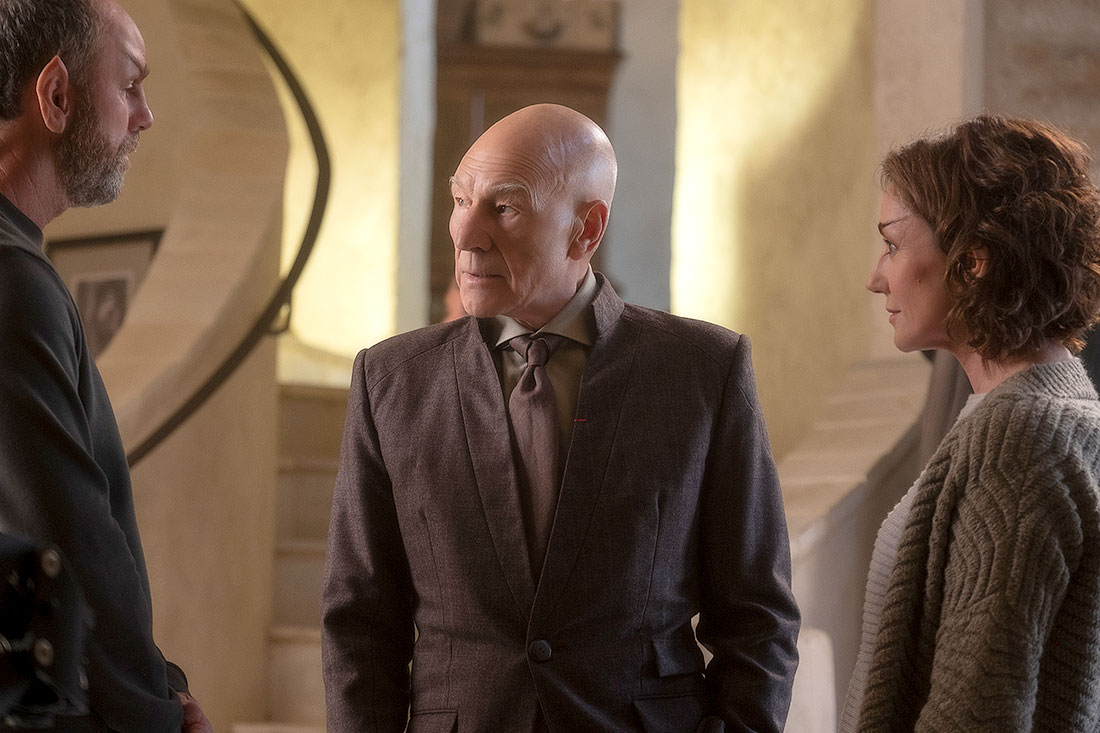
He is the captain we remember… even if we do find him in a wholly unfamiliar place as the series opens. He’s at home, on Earth, quietly ruing decisions of the past and what he has become, saying to Romulan friends — and attendants at Château Picard — Laris (a wonderfully-lively Orla Brady) and Zhaban (Jamie McShane) that while his dreams are lovely, “It’s the waking up that I’m beginning to resent.”
The melancholy opening of the series features one of those dreams, concluding with a series of massive explosions from the surface of Mars (first seen in the “Children of Mars” Short Trek) that destroys the Enterprise-D and ends a game of poker with Data (Brent Spiner), a game he’d said only moments before, he didn’t want to end.
(It’s a clever opening that literally begins where Nemesis ended 20 years prior, with a rendition of “Blue Skies” crooning in the background.)
The destruction on Mars, it turns out, is very real — and is the first of several big surprises in store for fans throughout the series’ first hour. We knew coming into the show that Admiral Picard’s mission to help save the Romulan people from the Hobus supernova — a disaster introduced in 2009’s Star Trek film — was going to be at the crux of his falling out with Starfleet.
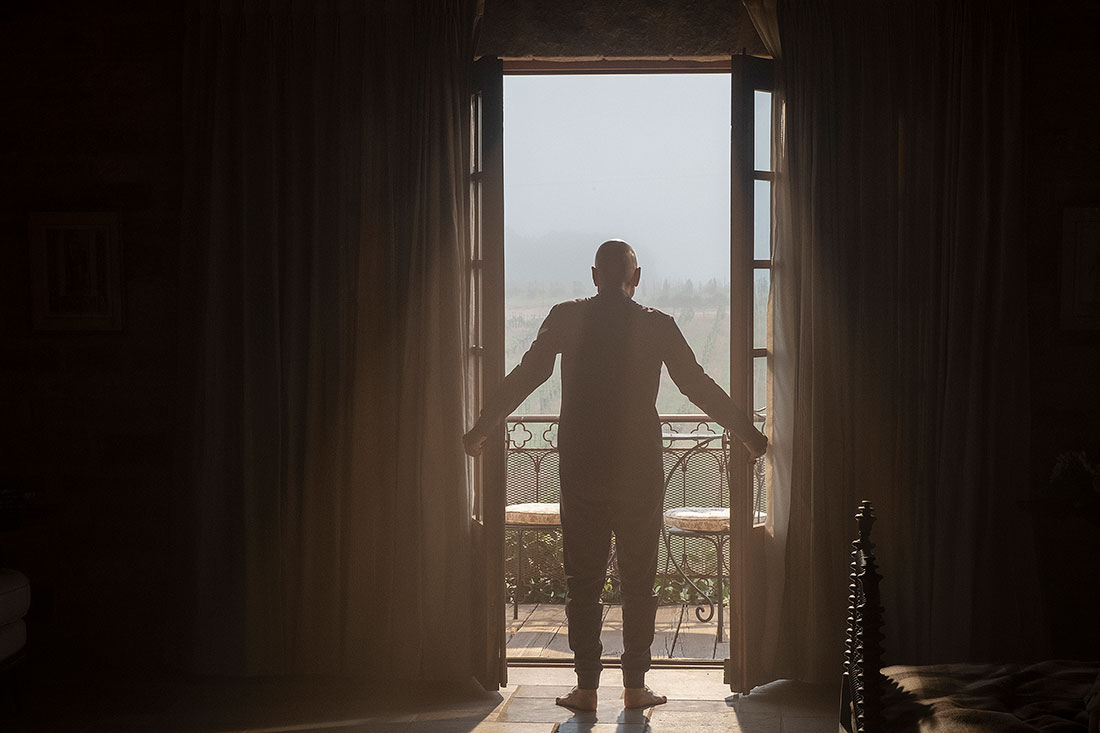
What we didn’t know was that the mission would never even get off the ground after Starfleet canceled plans to put resources toward that humanitarian duty because of an attack by “rogue synths,” or androids, that destroyed the beloved Utopia Planitia shipyards and set the red planet ablaze.
Stewart has spent the last few weeks talking about how Picard would touch on a myriad of real-world challenges being faced in the year 2020, and this attack on Mars nicely teases many of them: refugee relief, reductive border protection policies, debates on technological advancement, and more. Picard is even forced to emphasize the standalone word “lives” when an interviewer derisively says the scuttled supernova relief efforts were only designed to save “Romulan lives.”
It’s a dynamic jumping off point for a story that quickly unfolds over the first hour. Picard soon meets the mysterious Dahj (Isa Briones), who was recently triggered into a fight in which she methodically killed everyone involved in self-defense, before an innate sense guided her to find Picard, who she simply and eloquently describes later as “the great man.” An apt description.
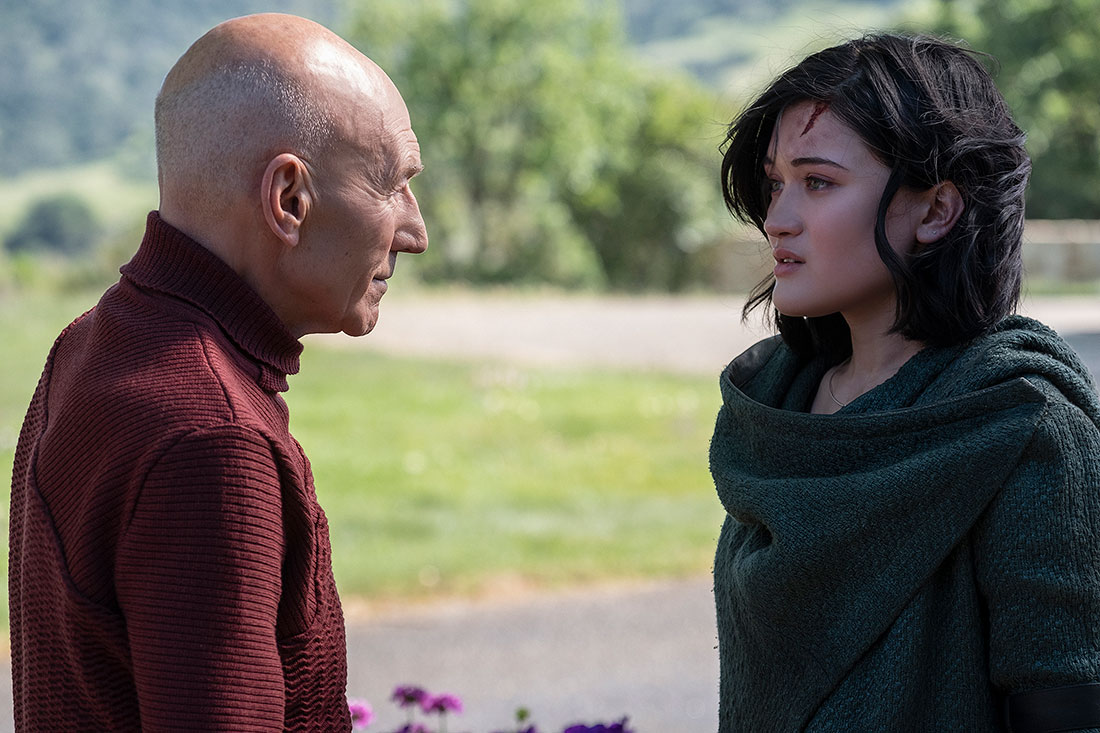
Beyond the amazing performance from Stewart, the introduction of Dahj is likely the most successful element of Star Trek: Picard. Played by television newcomer Isa Briones (pronounced EE-sa, not EYE-sa) with an exciting mix of pathos, danger and enlightenment, Dahj’s character is fascinating from the start. Her introduction eventually leads to several surprising and rewarding connections to Star Trek’s past, and her ultimate fate serves as the launching point for the series’ central mystery.
Briones’ character, like the whole series, is imbued by the touch of showrunner Michael Chabon, the famed Pulitzer Prize-winning author, and Star Trek superfan, empowered with guiding us on Picard’s journey late in life.
The script from Akiva Goldsman and James Duff ripples with literary influences. Here’s Picard quoting his beloved Shakespeare, “There is no legacy as rich as honesty.” And Dahj describing her awakening “like lightning seeking the ground,” and later asking of Picard, “Have you ever been a stranger to yourself?”
When Dahj is ultimately faced with the truth of what she is — seemingly, a sentient android “lovingly and deliberately created” by the infamous Bruce Maddox in his final attempt to replicate Data and the Soong-type androids –there is no better guide for her than Picard, who emotionally vows that, “If you are who I think you are, you are dear to me in ways you can never understand. I will never leave you.”
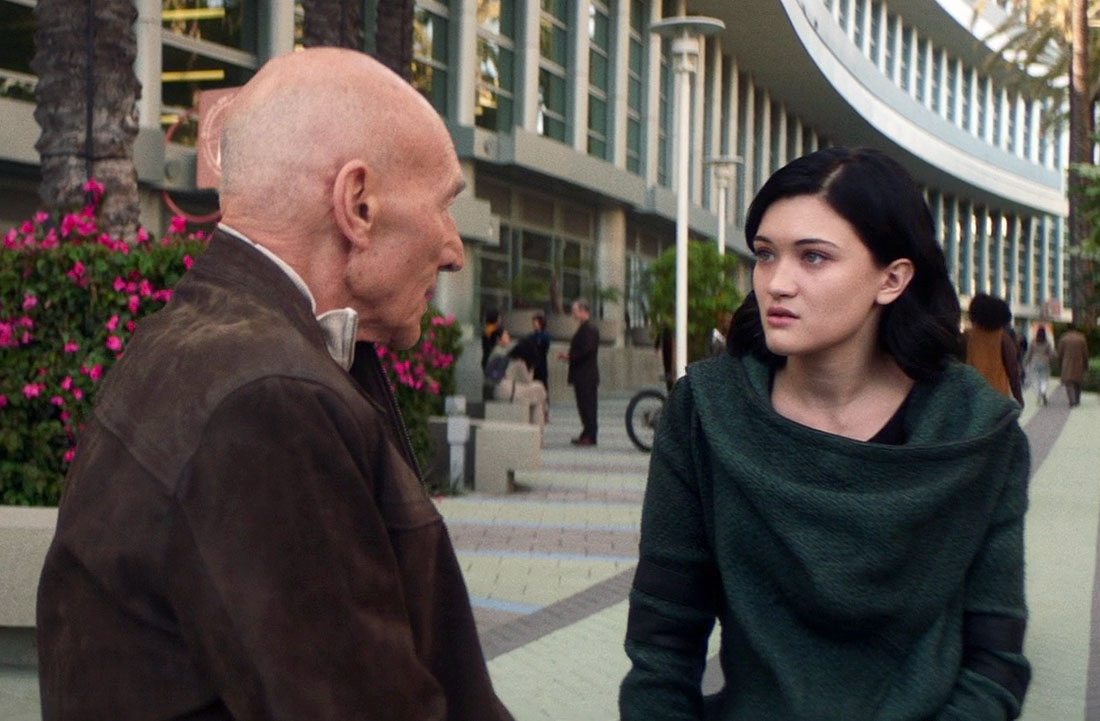
As a man who once lived an entire lifetime of memories in the span of 30 minutes, there is no one more suited than Jean-Luc Picard to help Dahj as she realizes that the memories she is recounting to him are not “real.”
“It’s a beautiful memory and it’s yours,” he tells her in support. “No one can touch it or take it away.”
The moment is truly special and hearkens back to one of The Next Generation’s crowning achievements, 1992’s classic episode “The Inner Light.” Whether it be Data’s paintings, or Maddox, or a subtle reference to a lifetime Jean-Luc lived in his head 20 years prior, the Picard series connects in deep and layered ways with past Trek that are wholly unexpected. Is the series a sequel to TNG? Of course not. But does it feel like an organic continuation of Rick Berman-era Star Trek? It sure does.
That association to Trek’s past is also on full display in the Starfleet Archive Museum, where the gift of Trek’s history is provided with a simple glance around the room as Picard attempts to unravel the mystery of one of his dreams. Stargazer? Check! “Captain Picard Day” banner? Check! There is even a quick glimpse of a model of the Sovereign-class Enterprise-E, making its first television appearance nearly 25 years after it was introduced in Star Trek: First Contact.
For anybody still confused on the Picard Show timeline situation. #StarTrek pic.twitter.com/yJhPF79JCL
— TrekCore.com 🖖 (@TrekCore) January 9, 2019
And whether by design or not, the backstory of Starfleet withdrawing from efforts to help save as many Romulan lives as possible dovetails quite nicely into the creation of the Kelvin Timeline, where we had previously learned that Spock was basically on an against-all-odds, one-man mission to try and nullify the effects of the supernova. His failure, and Starfleet’s now established abandonment, leads Nero on a path of Romulan revenge to eradicate Vulcan and Earth in the past. It’s all connected.
That failure to save Romulus, and his failure to help Dahj when she needed it during the episode’s rooftop battle, eventually springs Picard into action when he realizes he’s been: “Sitting here, all these years, nursing my offended dignity… writing books of history people would prefer to forget. I never asked anything of myself, at all. I haven’t been living; I’ve been waiting to die.”
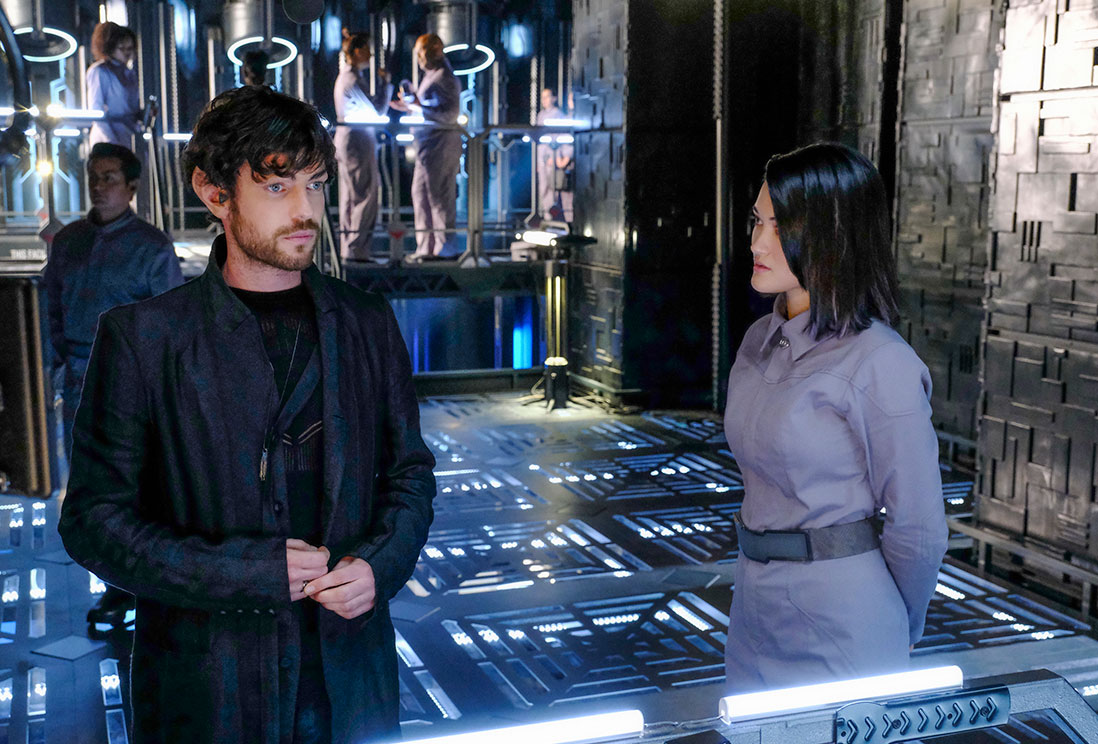
Ultimately, it all leads to a staggering conclusion at a “Romulan Reclamation Site” in space, where we meet another new regular cast member: a shady Romulan named Narek (Harry Treadway), who barely conceals his obvious ulterior motives… as he introduces himself to Dr. Soji Asha, played by Isa Briones in a surprise double role.
“So… there’s another one,” notes Picard, as he realizes that Maddox’s work gives him at least one more chance to learn about the mysterious “daughters” of Data; Soji is revealed to be Dahj’s twin sister, and at the core of everything happening in the series’ first three episodes.
As the two are chatting on an open walkway in the massive ship, director Hanelle Culpepper’s camera pulls back as composer Jeff Russo’s thumping score helps reveal one of the most iconic images in Star Trek’s illustrious history: an abandoned and damaged Borg cube now under the control of Romulan forces.
The moment is incredible, regardless of how many times you’ve previously seen the cube in trailers, and guided expertly by Culpepper’s direction, which helps unify the series’ first three episodes with consistent and assured camerawork — while refraining from some of the more avant-garde angles and movements seen frequently in Discovery.
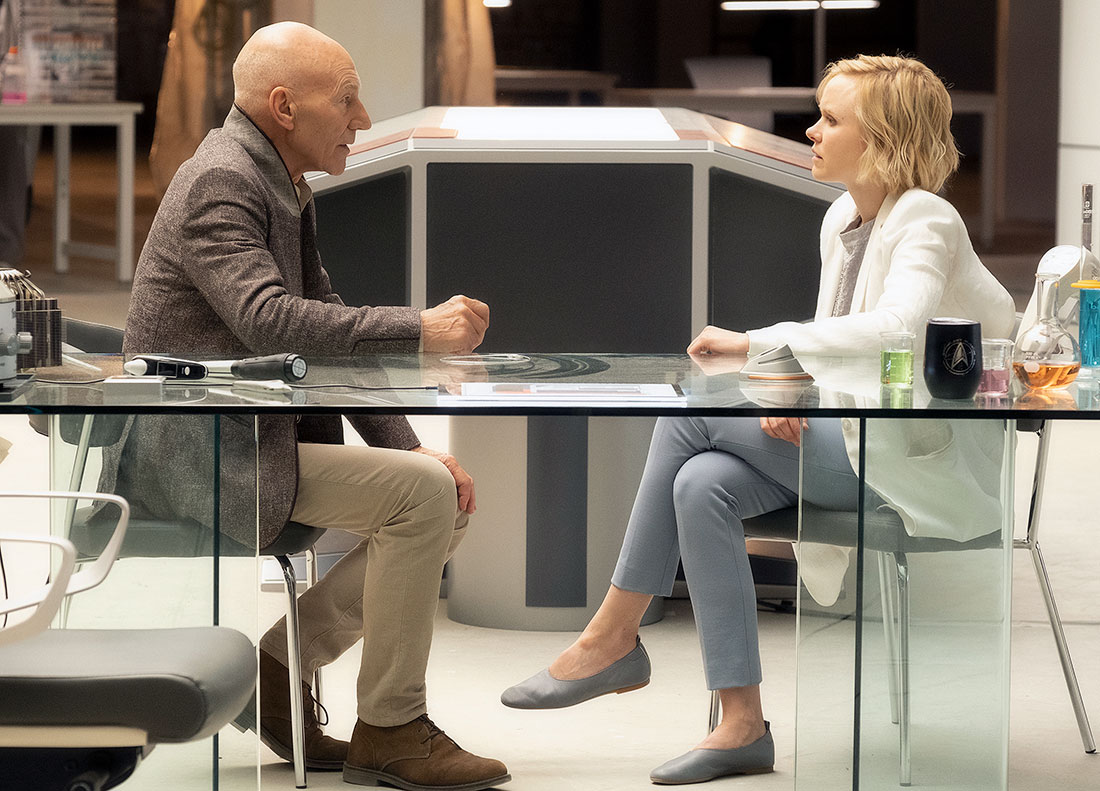
This first hour of the series also introduces us to Dr. Agnes Jurati (a delightful Alison Pill), a Maddox-recruited expert in advanced synthetic research, who explains that the androids who attacked Mars came from her and Maddox’s base of research at the Daystrom Institute in Okinawa.
Along with a boxed-up B-4 — the prototype Soong android introduced in Star Trek: Nemesis — Jurati and her tiny staff are allowed only to operate theoretically on their work, but Maddox has long since disappeared after the ban on synthetics (a mystery that will be more fully-explored as the series proceeds).
Missing from the series premiere are former Starfleet officers Raffi Musiker (Michelle Hurd) and Cristóbal Rios (Santiago Cabrera), two other newcomers who will join the story over the next two hours. Musiker’s backstory with “J.L.” Picard, first teased in the Star Trek: Picard — Countdown comic miniseries, satisfyingly fills in some of the gaps between Nemesis and Picard, while Rios’ introduction is done in such a smart and fun (and very unexpected) way, he is likely to become a fan favorite.
Missing from the first three hours is swordsman Elnor (Evan Evagora), a young Romulan recruited by Picard from a all-female sect of “warrior nuns” known as the Qowat Milat; likely he’ll be joining the adventure in hour four or five of the season.

Of course, two other well-known characters are also returning to the Trek collective in Picard: Seven of Nine (Jeri Ryan) and Hugh (Jonathan Del Arco). Only Hugh is seen in the opening three chapters of the series (Ryan makes her first appearance in Episode 104), but the influence of supervising producer Kirsten Beyer’s place as the voice of Star Trek: Voyager in the novels is something we look forward to seeing unfold.
Beyer is credited for the first time on Star Trek: Picard with a “created by” title, a culmination of her own amazing journey in Trek.
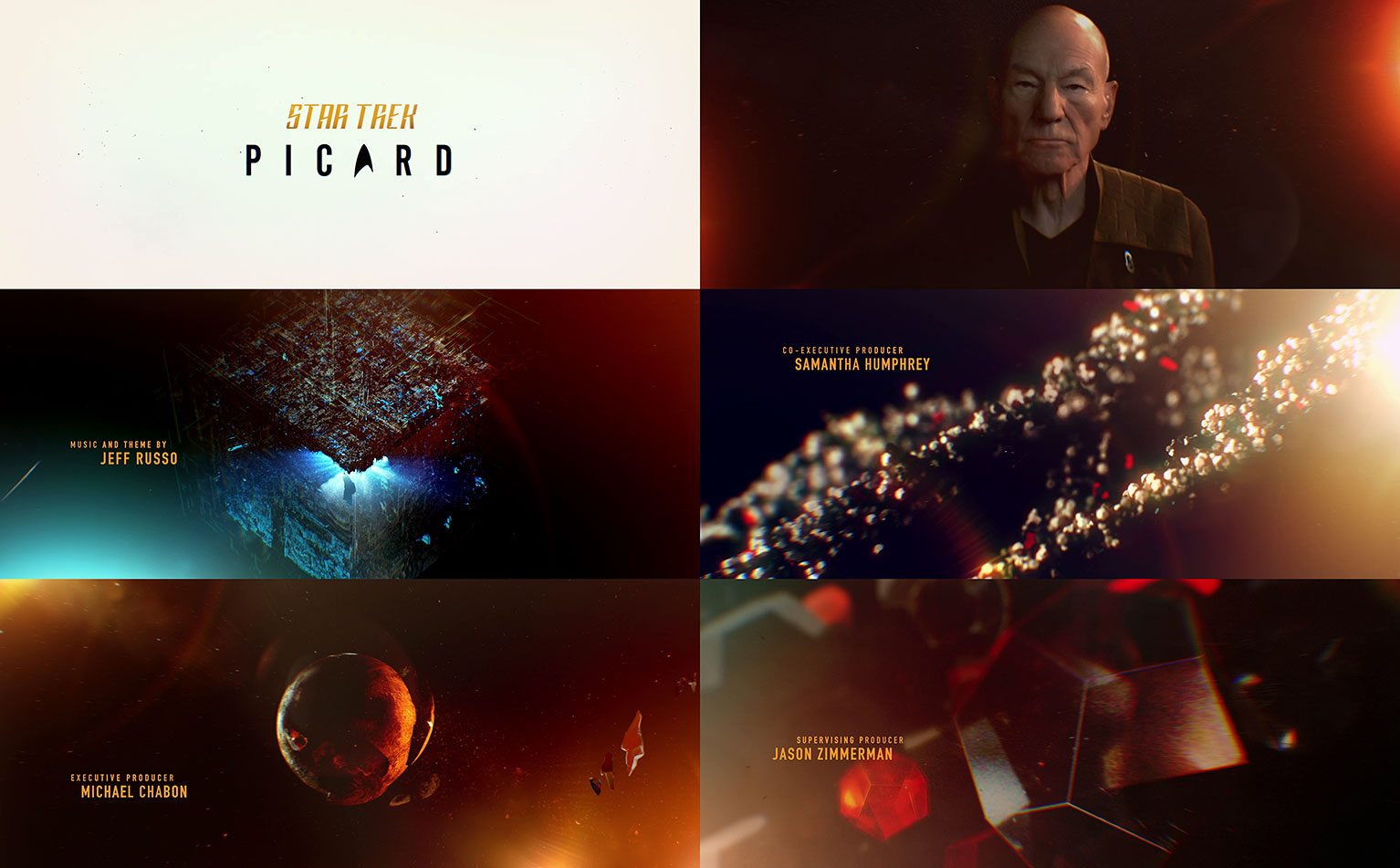
The series’ opening credits are very much in the style of Star Trek: Discovery and other modern ‘peak television’ shows, with abstract visuals that begin with a fragment from a crack in the sky falling toward a vineyard and across a Borg cube and a strand of DNA (among other items) before reforming into a complete image of our titular captain.
The music throughout the series’ first hour is also an inspiration, with Russo’s distinctive style landing in an understated and ethereal way, while standing clearly apart from his work on Star Trek: Discovery. His Picard series theme is wafting and poetic, and very different from any Trek theme that has come before. It is stripped down and quiet, beginning with a subdued piano and a graceful woodwind combining to make a distinct statement that this unique version of Trek is about one man’s journey.
The violin-heavy theme is so light and airy that some viewers may struggle to even find the “theme” in the first few listens, but once you land on the way Russo uses his string and reed sections to ever-so-slightly build toward a peak, you’ll find yourself humming it in no time. And as he did with the Discovery theme echoing a few cords of Alexander Courage’s original Star Trek music, Russo again echoes another Trek master as the Picard theme closes with a hint of Jerry Goldsmith’s famous theme from Star Trek: The Motion Picture, which of course was used to open each episode of The Next Generation.
Ultimately, Russo’s new music for Picard’s opening credits is so strong, there is every chance it will become the musical cue that you most associate with the character of Jean-Luc Picard — even when taking into consideration the uber-popular Jay Chattaway suite from “The Inner Light”. It’s that memorable.
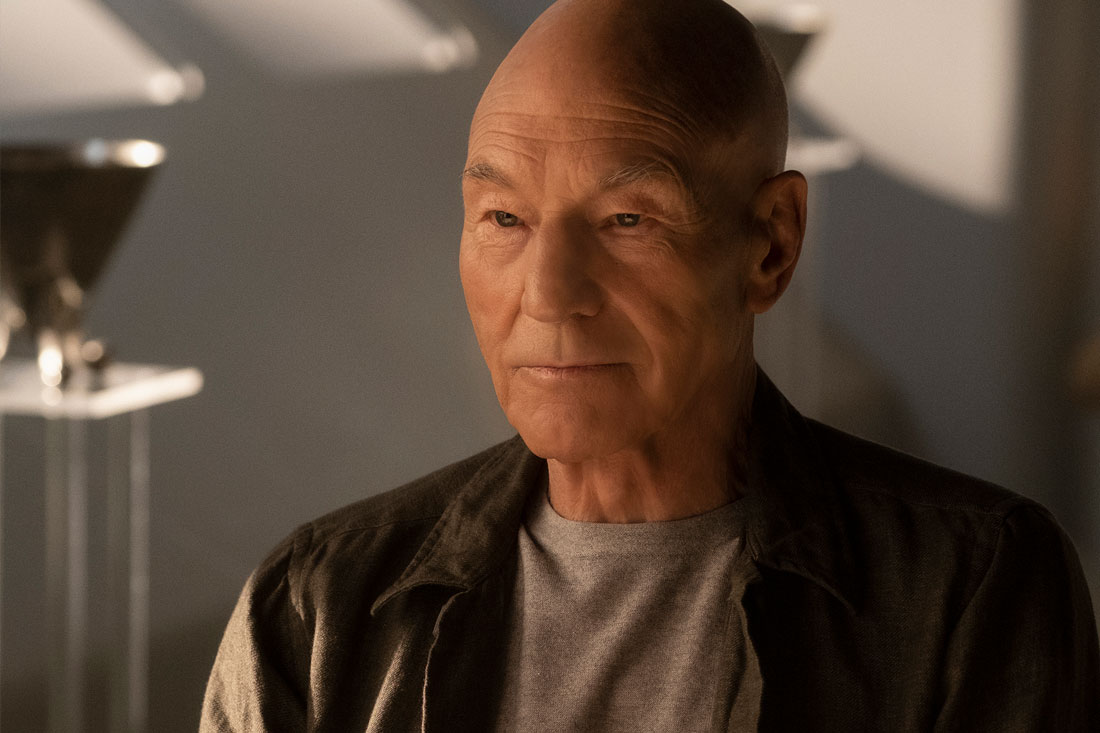
Star Trek: Picard never feels nostalgic, but instead plots a completely unique course forward for the franchise while simultaneously incorporating deep layers from Trek’s past. It’s an amazing feat, propped up by standout performances from Stewart and Briones. The mysteries are intriguing (and instantly satisfying), and Chabon’s nuance on the page is impactful.
Against the heavy weight of expectations and anticipation, Star Trek: Picard is an unqualified success.
Jim Moorhouse is the creator of TrekRanks.com and the TrekRanks Podcast. He can be found living and breathing Trek every day on Twitter at @EnterpriseExtra.
